Jewel Cabinet
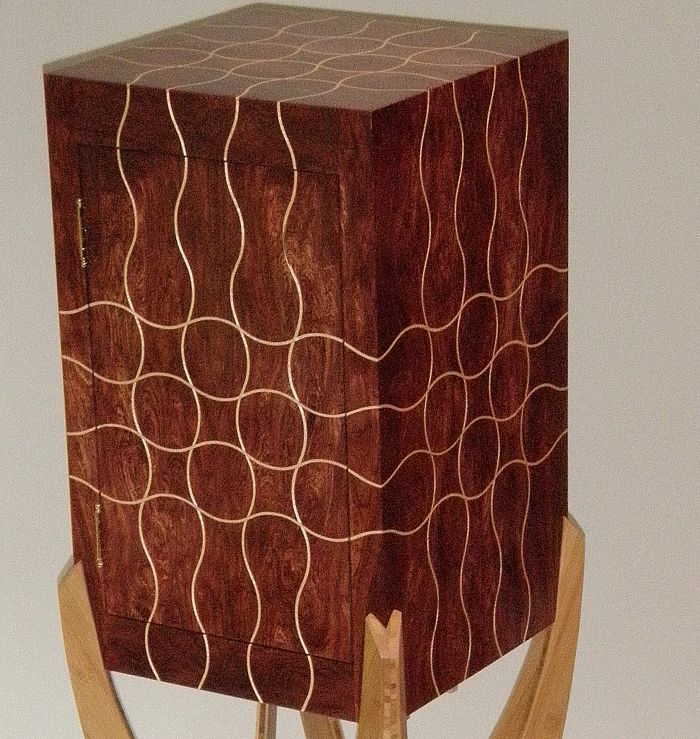
Detail of inlaid pattern
The bamboo base joins 32 points in curved and angled space. The case is a perfect golden rectangle (PHI) banded with an intersecting inlaid wave pattern in steam bent rock maple that mimics the natural figure of the drawer fronts. Interior features 16 bookmatched drawers that pull out and swivel open. Raised dovetailed dentil moulding on the interior adds interest to the design.
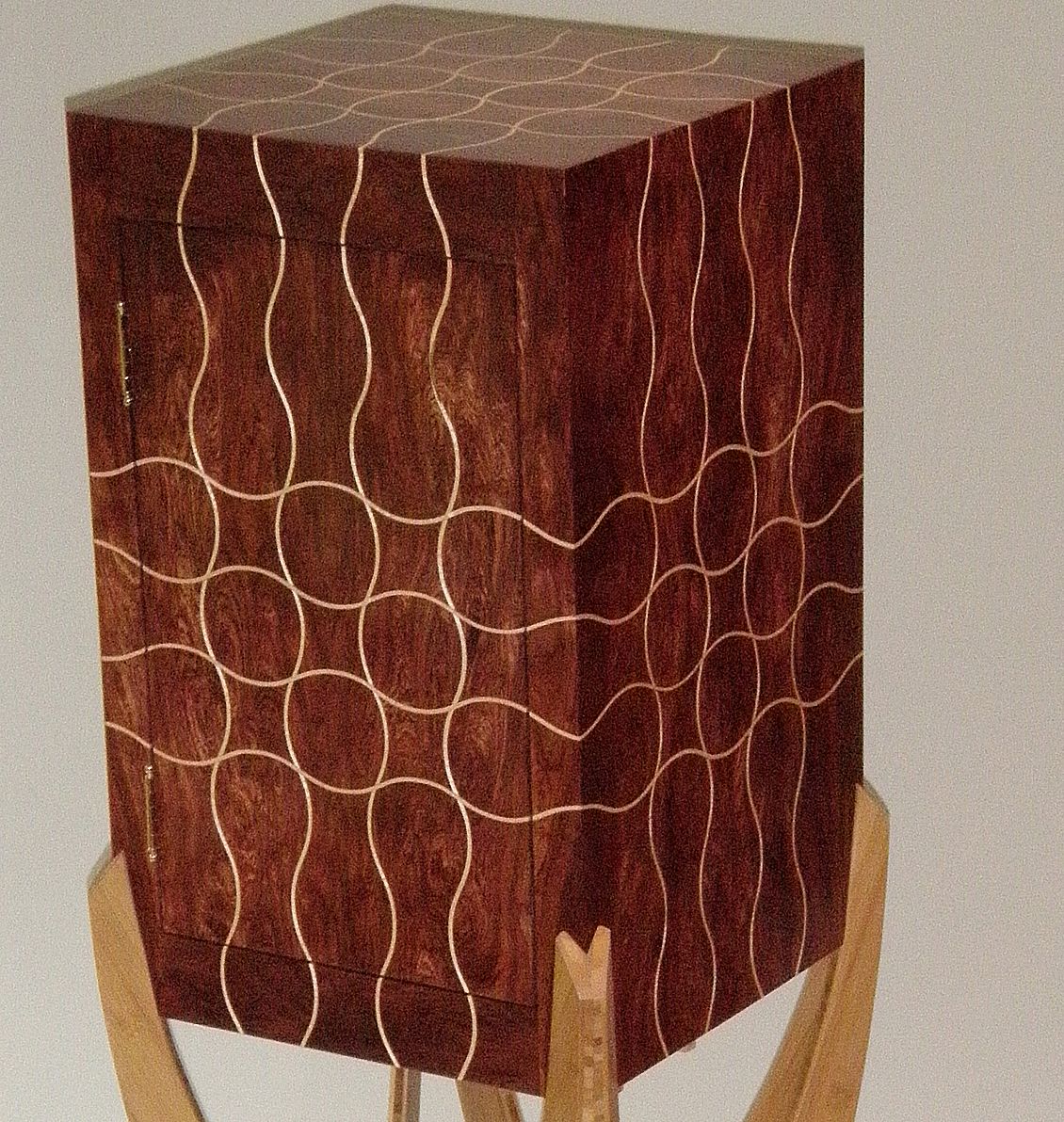
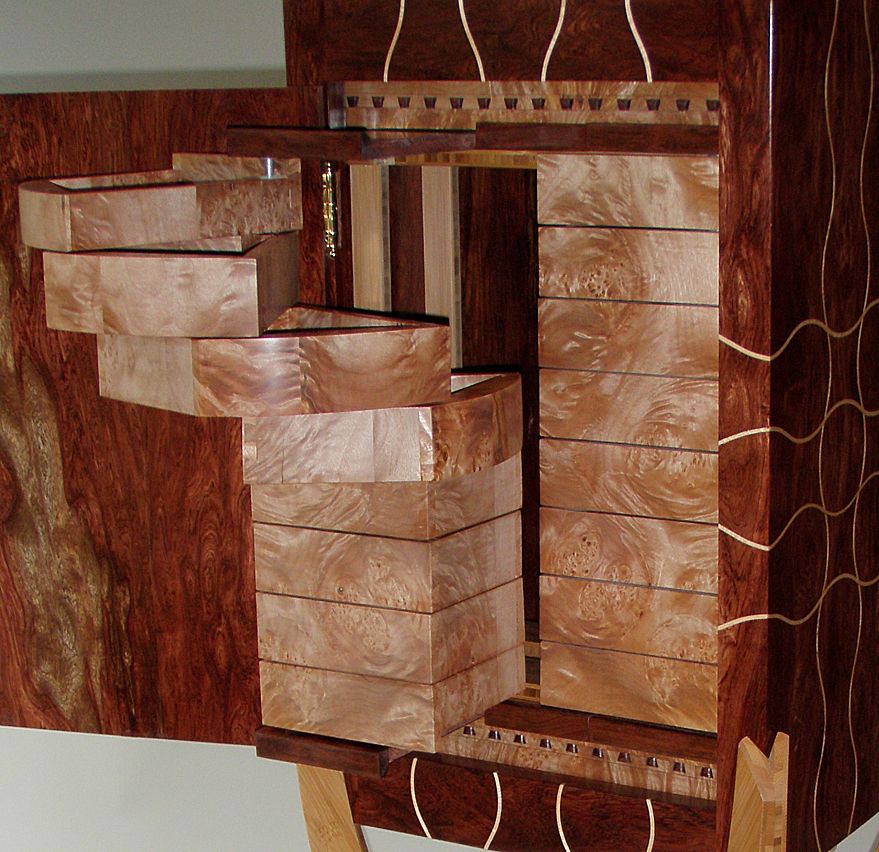
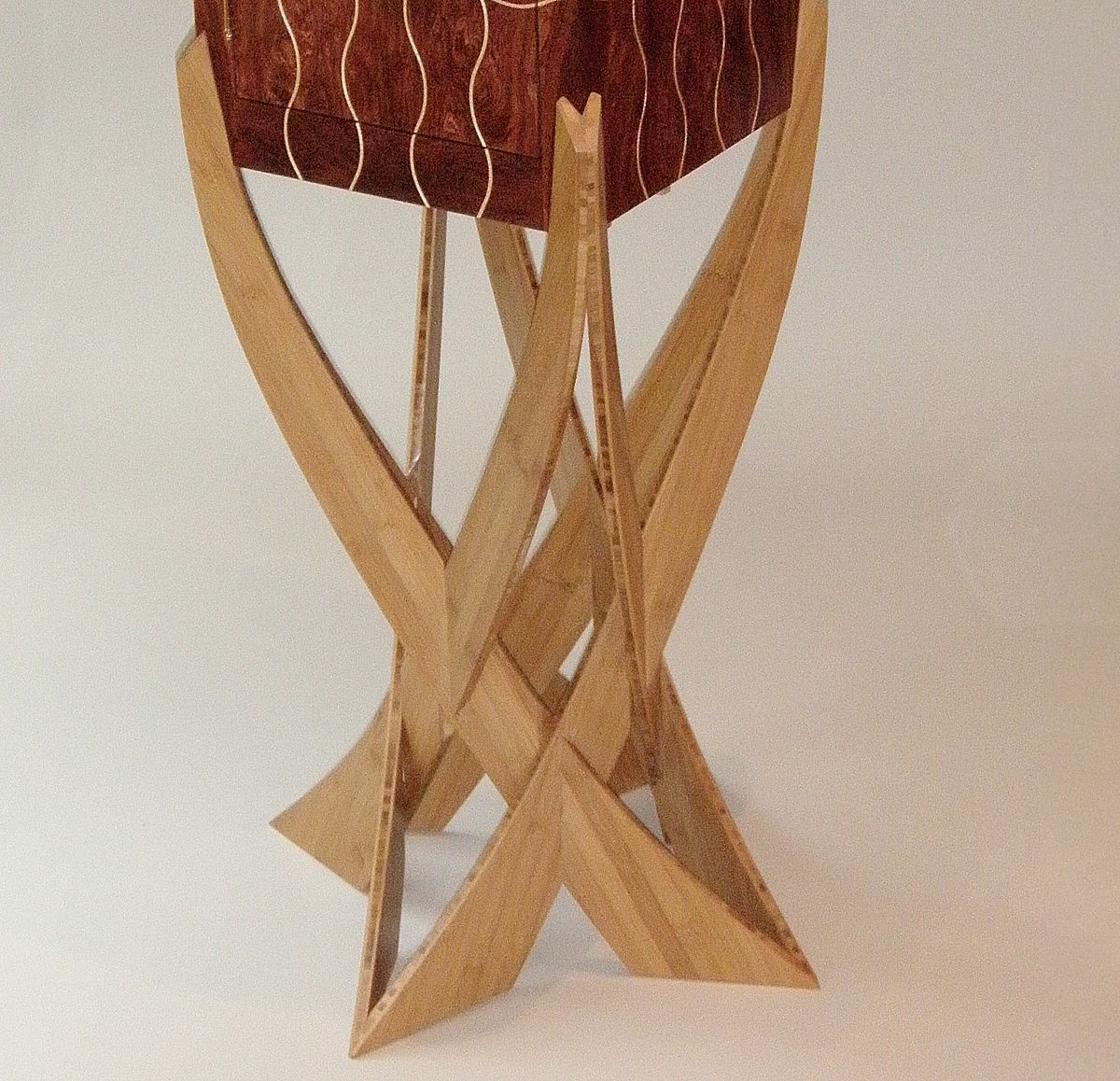

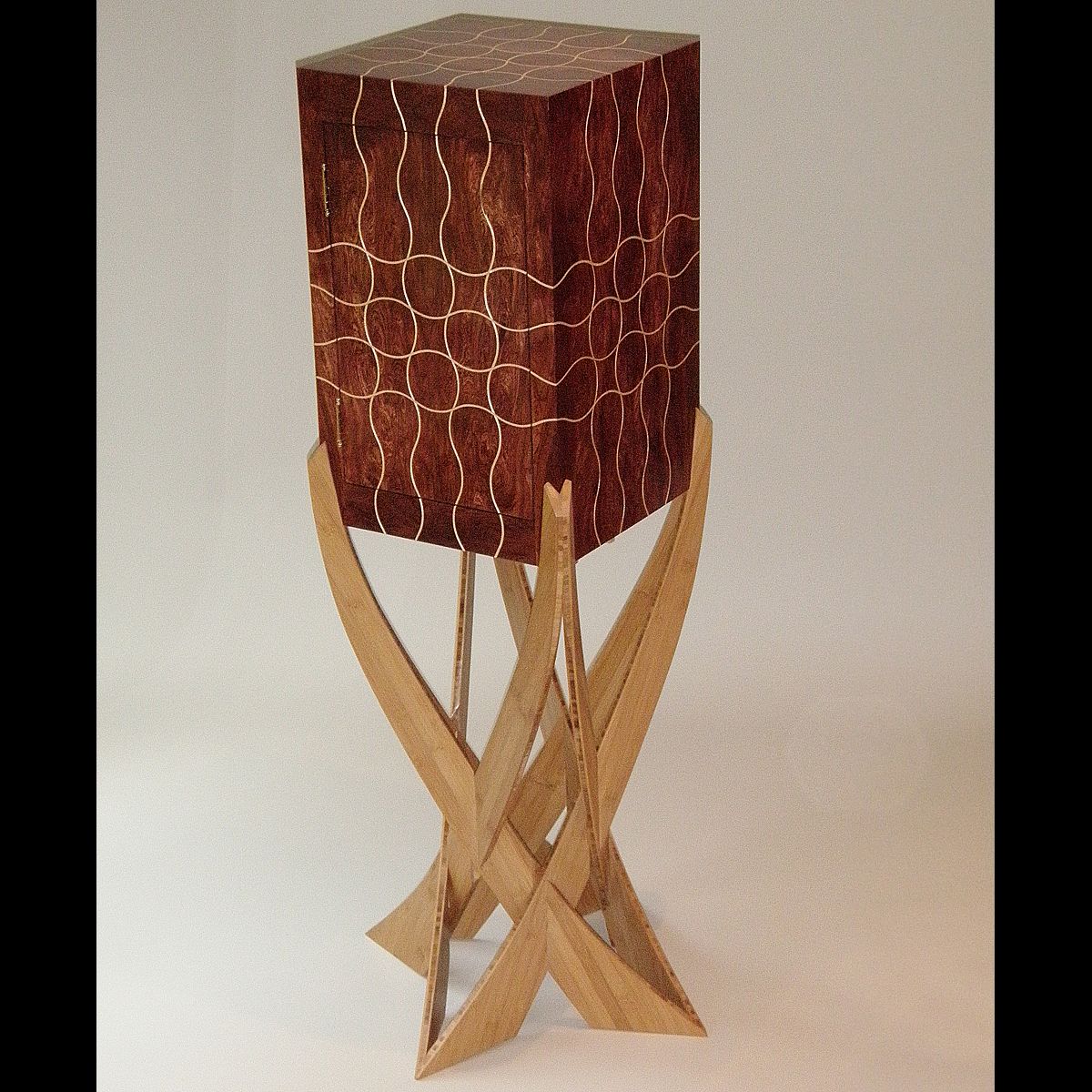
















Comments
I very much like the base on this cabinet. Are they flat sections slotted together? I notice from your site that you like this technique, how do you do the joint design? Did you laminate the bamboo yourself?
This design is so cool! You have crafted a functional piece of art, a beautiful and inspired jewelry cabinet. Thank you for posting these great photos.
Thank you for noticing my work and adding comments. To answer a few questions...
The bamboo is laminated by the producer, I've been using it on quite a few different projects with excellent results. My supplier has 4 x 8 sheets in 1/8 inch to 3/4 inch. It is also available in butcher block and counter top styles. It cuts, machines, and finishes well, typically a bit harder than red oak. The edge is a solid bamboo laminate and produces an interesting 'inlaid' look to the piece. They do offer edge banding but I've not used it at this point.
The base is created with long angled lap joints...simple to design but difficult to construct due to the very tight tolerances necessary in both layout and angle. The joinery does have some surprising sculpted angles and also requires two 'keys' to make it fit together. I have used the technique to design quite a few original pieces...mostly based on hex or octagonal geometry. it makes for a very light but strong structure with interesting facets and play between light and shadow. (My 'art pedestal' using the hex design has been tested to over 600 lbs.)
The case also required an unusual amount of precision to create the wave inlaid pattern. My template was hand made (read imperfect!) so that matching all the maple stringing at each corner of the case took patience and forethought. The bookmatched drawers have tight tolerances as well, and were a challenge to integrate into the case. Overall, it was a difficult design to execute and required a fair amount of mathematics (geometry and trig). As an ex engineer turned professional furniture maker, it's good to know that college wasn't a total waste!
I should also mention that the glue up was hectic...things could go horribly awry and ruin all the previous work. Lastly, the finished piece is quite large, 24" x 24" x 54"h. Thanks again for looking!
It is an absolute equisite piece of work. So very imaginative and well done.
This is just awesome! I think that designing the stringing inlay as a sort of foreshadowing of what lay beneath the surface was an incredible design idea. I also like the way that the rectilinear case rests inside of a curvilinear base - much the way a faberge egg rests in it's ornamental base. And then there's the articulation of the moving parts, inside. Really nice work. This should be a feature article in the magazine (if it isn't already).
Log in or create an account to post a comment.
Sign up Log in